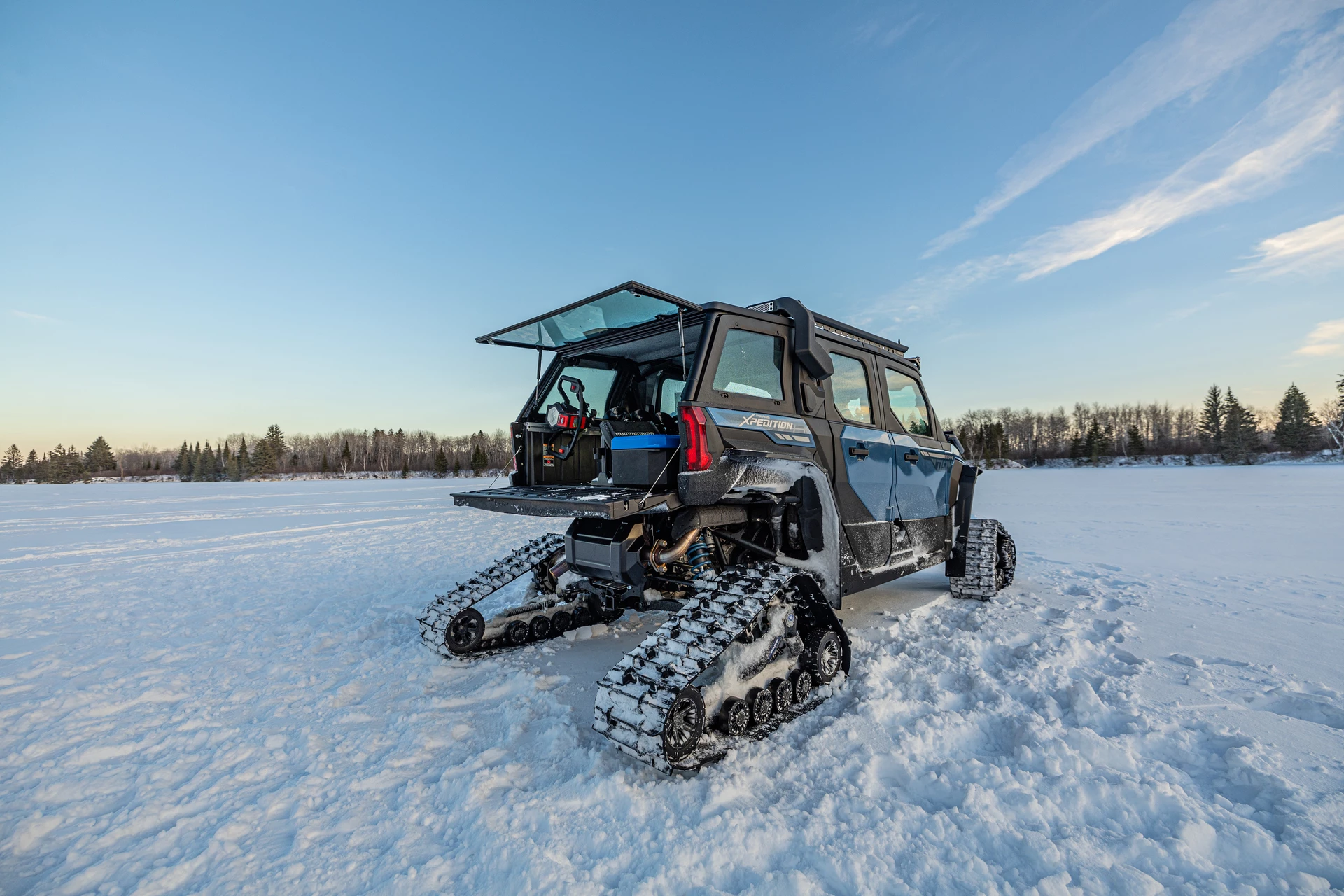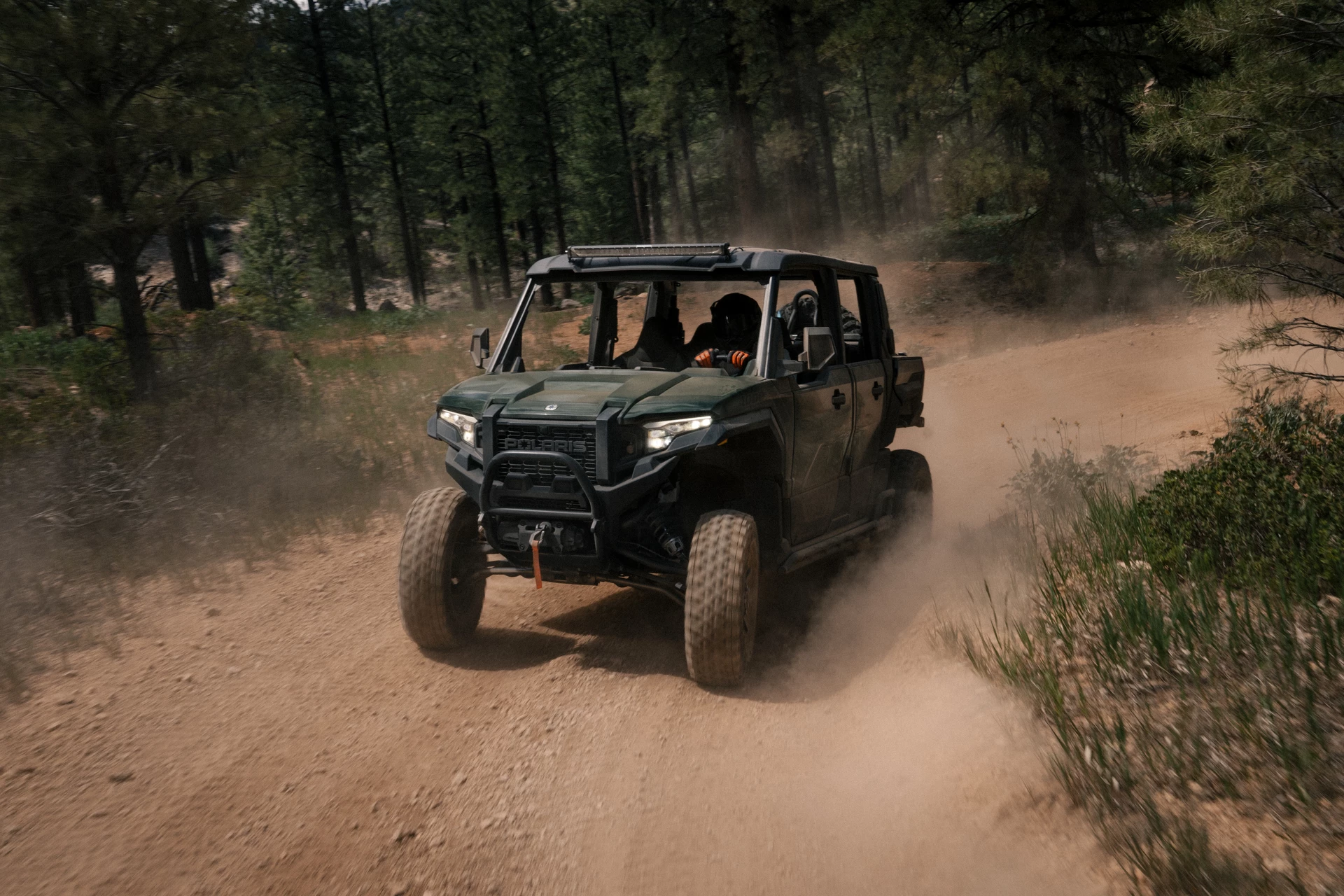Built from scratch, the new Polaris Xpedition is a large two- or four-door side-by-side-style off-road vehicle that features more interior room for riders and more storage and accessory options for getting out into the wilds. Polaris unveiled the vehicle at a virtual event where we asked questions about the rig and gained insight into the company’s plans for this new AV (adventure vehicle).
The takeaway is simple. Buyers of UTV and ATV products like Polaris’ main line of vehicle often bring them on a trailer behind an overlanding or off-road vehicle ... or they upgrade to an overlanding rig without a UTV at all. So there is a market for those who’d want a combined UTV and overlanding rig. Enter the Xpedition.
The fully-enclosed two-seat Xpedition has removable panels like other Polaris models, including windscreen, windows, and roof. Roof and side covers are available in both cloth and hard materials, and are modular and configurable. Enclosing the Xpedition makes it more long-travel-worthy for overlanding, and allows for cabin heating and other amenities.
The two-door models are only slightly larger than Polaris four-seat RZR models. The Xpedition XP and ADV measure in at 122.5 x 64 x 74.9 inches (311.1 x 162.5 x 190.2 cm, length, width, height). Wheelbase is 87.5 inches (222.2 cm) and ground clearance is 14 inches (35.6 cm). The XP has a bed box that measures 30.3 x 47.25 x 13.38 inches (77 x 120 x 34 cm) with a 600-lb (272-kg) dump box capacity or a 1,160-lb (626-kg) full cargo capacity.

The ADV model stretches the bed box dimensions by removing the dump bed option. Storage box dimensions are 36.2 x 47.25 x 13.38 inches (92 x 120 x 34 cm) in both the two-door and four-door models. Payload drops to 1,030 lb (467 kg) in the two-door and goes back up to 1,160 lb with the four-door.
The tow rating for all models is 2,000 lb (907 kg).
The engine powering the Polaris Xpedition is a 999-cc ProStar 1000 Gen 2 EFI that produces 114 horsepower (85 kW) to an automatic passively variable transmission (PVT). This includes on-demand two-wheel and all-wheel drive with a rear-wheel bias. The front suspension of the XP reaches 14 inches (35.6 cm) of travel and the rear stretches 15 inches (38.1 cm).
The four-door Xpedition models add length to a total of 152.5 inches (387.3 cm), but are otherwise the same dimensionally. The added length upgrades seating capacity to five, and stretches the wheelbase to 117 inches (297.2 cm). Dry weight for the four-door increases from a low of 2,100 lb (952.5 kg) for the low-end XP two-door to 2,790 lb (1,265.5 kg) in the four-door model’s high end.
All Polaris Xpedition models include a 12.5-gallon (37.3-liter) fuel tank and a range of 200-plus miles (322 km) per tank. Each can bear 150 lb (68 kg) in dynamic rooftop load and 500 lb (227 kg) static.
As with most off-road rigs, accessories for the Xpedition are plentiful. Polaris sells these individually or in kits meant for specific adventures. The Overland kit, for example, adds lighting, a rooftop tent, mud boards, Pro Armor Crawler XG tires, a full-sized spare carrier, and more. The Kayak kit adds accessories for carrying kayaks, skeleton half-doors, etc. Other kits include a Trail, a Utility, and a Hunt kit with similar activity-focused add-ons.

Pricing for the new 2024 Polaris Xpedition begins at US$29,000 and runs to about $40,000, not including accessories. Polaris says that units will begin entering showrooms in the US in the fall of 2023, with the full model lineup being available by the end of year.
Product page: 2024 Polaris Xpedition



















